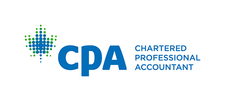PERSONAL FINANCE
The end of the year is a good time to review long-term investments and mortgages.
New Year’s resolutions. So easy to make, so hard to keep. According to a Nielsen survey, the most common resolution for 2015 was to keep fit. A resolution to spend less money and save more was only the fourth most popular after lose weight, and enjoy life to the fullest. As we are about to enter 2016, perhaps we should all resolve to pay more attention to spending and saving and the effect on our investment portfolios and mortgages in the coming year.
Review Your Investment Portfolio
- Start with investments outside the RRSP or RRIF.
- Calculate the gain or loss between the end of 2014 and the end of 2015.
- Review your statements for the entire year.
- Calculate investment fees paid.
- Identify withdrawals or contributions.
- Net your gains against your losses.
- Calculate the percentage return on investment after deducting the cost of fees paid to your broker, financial advisor or mutual fund manager.
- Using this rate of return and a compound interest table, assume a constant rate of growth and calculate what the investments could be worth by the time you want to cash them in.
- Calculate the potential future value assuming:
a) a regular annual capital infusion
b) no capital infusion. - Using different rates of return, calculate how much additional capital must be
Review Your RRSP
For self-employed persons and those not in pension plans, the RRSP probably represents the principal source of retirement funds. As such, the capital gains and income generation should be monitored closely. Perform the exercise mentioned above on your RRSP portfolio to determine whether the future value of your RRSP investments will be sufficient when you can no longer contribute and have to roll the RRSP into a RRIF in the year you turn 71.
If you discover the calculated rate of return on the RRSP and your current level of contributions will not meet your investment goals, discuss the various options available to you with your investment advisor. Perhaps you will need to restructure the balance between equities and interest-bearing securities, increase the risk or increase your contributions. Keep in mind, however, that higher rates of return usually bring a higher risk of a loss.
Now is also the time to review your RRSP contribution limit to determine any unused amount. Do not forget that unused annual contribution amounts are carried forward. If you find a fairly large balance of accumulated contribution room, you and your advisor may be able to develop a strategy to meet your investment/retirement goals.
Funds can be withdrawn from a RRIF into a trading account or a TFSA.
Review Your RRIF
If you have already rolled your RRSP into your RRIF, review the RRIF portfolio using the procedure outlined above. There is a mandatory withdrawal rate based on a predetermined percentage. (This information is available from CRA or from your investment advisor.) Review the current value and rate of return. Remember that the withdrawal rate simply determines the portion of the RRIF that must be deregistered each year and brought into taxable income. It does not mean you have to sell that portion of your portfolio every year. In a self-directed plan, for instance, the taxable amount can be transferred in kind into a trading account and thus remain part of your total investment portfolio for future use.
Instead of having a trading account to receive the securities withdrawn from your RRIF, you could move them into a Tax-Free Savings Account (TFSA) if you have the room. Future capital gains and income within the TFSA are not taxable.
Review Your Mortgage
Reviewing your mortgage should be part of any New Year’s resolution. Look at the current balance and determine when the mortgage will be completely paid off at the current payment rate. Ideally, your mortgage should be fully paid before retirement so you do not retire still having to withdraw funds from your RRSP or RRIF to meet mortgage payments. Review the mortgage agreement and identify any lump sums that can be paid to reduce the remaining balance owing. Use an amortization table to calculate the number of years by which the life of the mortgage can be shortened by doing any or all of the following:
- a) finding a better interest rate
- b) changing the payment frequency from monthly to weekly, or
- c) making a lump sum payment.
Work with Your CPA
Whether projecting income within your investment or retirement portfolios or calculating a strategy to reduce your mortgage, amortization tables will help you with those calculations. Work with your CPA to provide unbiased feedback on the choices available to you in your particular circumstances. The decisions you make now will impact not only your lifestyle but personal income taxes in the future.
Contact Argento CPA today!
Source: BUSINESS MATTERS
Disclaimer: BUSINESS MATTERS deals with a number of complex issues in a concise manner; it is recommended that accounting, legal or other appropriate professional advice should be sought before acting upon any of the information contained therein.
Although every reasonable effort has been made to ensure the accuracy of the information contained in this letter, no individual or organization involved in either the preparation or distribution of this letter accepts any contractual, tortious, or any other form of liability for its contents or for any consequences arising from its use.
BUSINESS MATTERS is prepared bimonthly by the Chartered Professional Accountants of Canada for the clients of its members.
Richard Fulcher, CPA, CA – Author; Patricia Adamson, M.A., M.I.St. – CPA Canada Editor.
Contact us: patricia@adamsonwriters.ca


